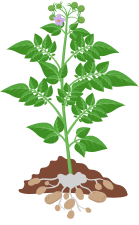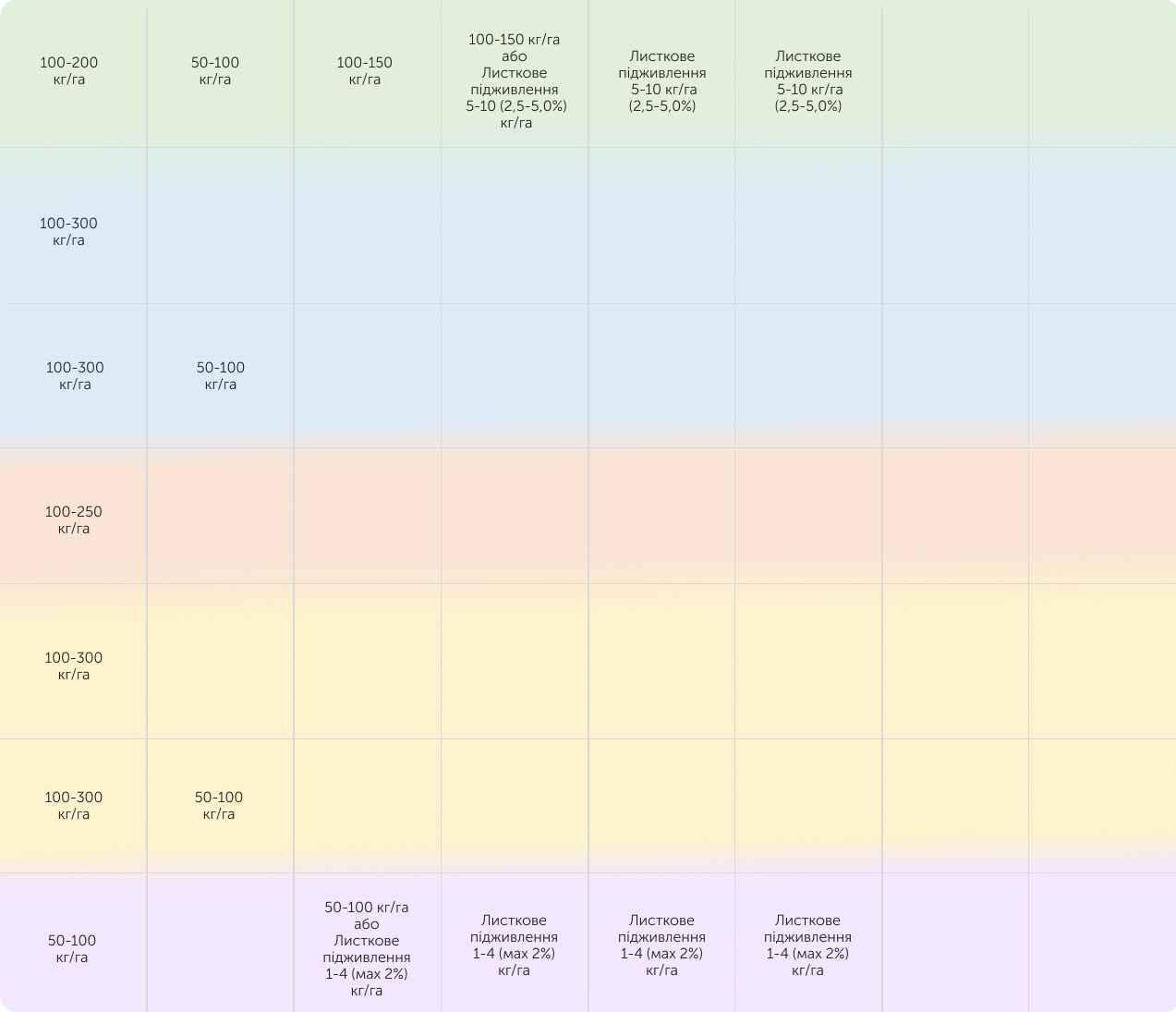








Principles of application
The use of potato for seeds, food and technical purpose effects fertilization program. Underdeveloped root system limits ability to adsorb the nutrients from lower layers.
To get 1 t of potato with haulm, the crop consumes of 4-7 kg of N, 1,2-2,0 of P2O5 and 6-9 kg of K2O, but it depends on the duration of the growing season. Potato consumes at about 0,6-0,8 kg/ha of calcium, magnesium and Sulphur.
Balanced nutrition provides high yield and appropriate quality of potato. Nutrition rate is calculated in accordance with nutrients availability in the soil, soil texture and direct use of potato. Throughout the growing season nutrient consumption is ununiform. Up to 75% of nitrogen, 65% of phosphorous and about 50% of magnesium are taken up by potato before flowering period. This amount of nutrients are used for vegetative mass growth. With intensification of potato growth the rest of unabsorbed elements are also involved and we can observe outflow of these elements from vegetative mass to potato. During the period of harvesting, potato already contains up to 80% of nitrogen, 90% of phosphorous and 95% of potassium.
In case of nitrogen fertilizers application it should be noted that insufficient nitrogen weakens growth and partially decreases yield and starch content. Excessive nitrogen application causes yield reduction due to intensive growth of vegetative mass, second and third order of stolon development, worsens the quality of product, decreases marketability, starch content and potato storability. The best form of nitrogen fertilizers is ammonia form which provides prolonged effect and positively effects yield and quality, decreases potato scabs infection, that can worsen its marketable appearance. Nitrate and amid forms can also be applied in fertilization program. It is better to apply nitrogen fertilizers under potato in spring when pre-planting cultivation.
Phosphorous fertilizers stimulate intensive growth of root system, accelerate development of potato, increase yield and potato resistance to diseases and encourage its better ripening. Insufficient phosphorous supply can lead to nitrate accumulation.
Water-soluble or acid-soluble application form of phosphorous fertilizer depends on soil solution reaction and application time. Water-soluble form should be used for pre-planting and at planting application. Sufficient moisture increases phosphorous fertilizer effectiveness.
Potato positively reacts to potassium fertilizers. Potassium nutrition stimulates starch formation and makes the culture more resistant to injuries, decreases soluble carbs content, improves storability of potato. Potato planting on well-supplied potassium soils requires less water for solid matter formation and so that soil can better tolerate drought. Insufficient potassium delays carbohydrates outflow from leaves to potato and decreases starch content in it. Excessive potassium can increase water content in potato and along with excessive nitrogen increase losses during storage.
Potassium fertilizers which contain chloride in their composition can worsen quality of potato. Potassium fertilizers with chloride are applied prematurely to make cloride wash out or move into deep layer throughout autumn-winter period. Chloride-free potassium fertilizes can be applied in autumn and spring during secondary tillage. It is advisable to apply potassium fertilizers in spring on light texture soils.
In order to get potato of better quality, enhance starch synthesis and neutralize excessive nitrogen nutrition it must be understood that potato magnesium supply is very important especially on light soils against a background of intense potassium fertilization.